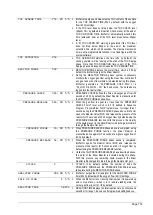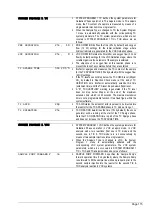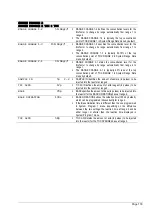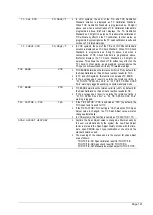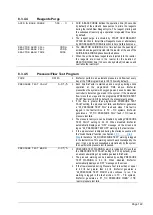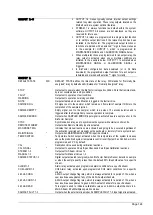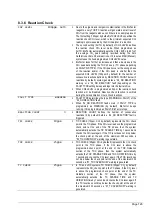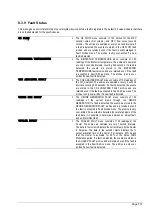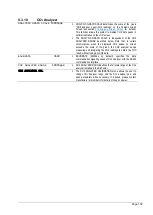
Page 119
8.3.4.2
Zero Program
ZERO PROGRAM 5 , 3 , 3
In ZERO PROGRAM 5, 3, 3 setting, the first, second and third
inputs define the minimum number of reactions to be carried out
at Range 1, Range 2 and Range 3 respectively during the Zero
Calibration and Zero Check cycles. Zero cycles are activated by
RUN ZERO CALIBRATION/CHECK functions in Zero Calibration
menu or by START NEW REAGENT CYCLE function in Install
New Reagents menu.
If two or any of the three ZERO PROGRAM settings is set to
zero, system runs the zero calibration/check reactions only at
the programmed range(s) and calculates the TOC Zero Adjust
values for the corresponding range(s) using the measured zero
adjust figure.
ZERO PROGRAM MAX 10
ZERO PROGRAM MAX defines the maximum number of zero
reactions system will operate at a specific range if the
corresponding AVERAGE ZERO reading is not within the
programmed ZERO BAND below. The corresponding AVERAGE
ZERO result is calculated from the programmed number of
readings defined in ZERO AVERAGE below. This parameter is
common to all ranges.
ZERO AVERAGE 3 , 2 , 2
In ZERO AVERAGE 3, 2, 2 setting, the first, second and third
inputs define the number of zero reactions to be averaged to get
a representative Zero Adjust value for Range 1, Range 2 and
Range 3 respectively.
ZERO BAND 0.050mgC/l
ZERO BAND is the
mgC/l concentration band for the TOC/TC
readings obtained during the Zero Calibration or Zero Check
reactions. System initially runs the minimum number of reactions
and calculates the average value at a specific programmed
range. If the variation between the average result and each of
the reaction results used in the averaging is not higher than the
programmed ZERO BAND, the system completes its zero cycle
and generates the necessary Zero Adjust figures. However, if
any of the reaction results used in averaging is outside the band,
then the system runs an additional Zero Reaction, and evaluates
the readings again using the new average value. This cycle is
repeated until the system obtains stable zero readings, which
must be within the ZERO BAND. If stable zero readings are
obtained within a certain number of reactions, which is less than
or equal to the maximum number of reactions defined in ZERO
PROGRAM MAX above, the Zero Adjust values are generated
without any system warning.
If zero stability is obtained on the executed range, system does
not seek for further stability on the subsequent ranges.
If the system cannot reach stable zero readings, in other words,
if one or more of the TOC/TC readings are outside the
programmed ZERO BAND at the end of the maximum number of
reactions, depending on the type of zero cycle, system creates a
“42_ZERO CAL FAIL” or a “43_ZERO CHCK FAIL” warning and
logs it into the fault archive. When a “42_ZERO CAL FAIL
warning occurs, system does not generate any Zero Adjust
figures and continues operation using the previous Zero Adjust
values.
pH ADJUST BASE 14 , 0 , 0
The three pH ADJUST BASE parameters defines the number of
pulses the base reagent pump operates to inject base reagent
into the reactor at each available system operation range, which
are Range 1, Range 2 and Range 3.
This function is used to neutralize the pH of the Mixer Reactor.
pH ADJUST TIME 60s
pH ADJUST TIME determines the mixing time (60 seconds by
default) the Mixer Reactor operates for the pH neutralization of
the reactor.
Summary of Contents for BioTector B3500C
Page 17: ...Page 17 Software Menu Diagram...
Page 44: ...Page 44 Figure 4 BioTector analysis layout typical TIC TOC system...
Page 46: ...Page 46 Figure 6 BioTector oxygen concentrator layout...
Page 63: ...Page 63...
Page 78: ...Page 78 Section 8 Maintenance Menu Maintenance Menu Diagram...
Page 155: ...Page 155 Section 11 System Replacement and Spare Parts...
Page 163: ...Page 163 ZK Zero check ZM Manually input zero adjust ZS Zero and Span...










